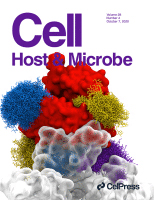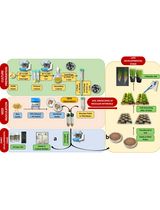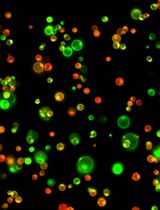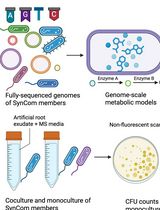- EN - English
- CN - 中文
Tomato Stem Injection for the Precise Assessment of Ralstonia solanacearum Fitness in Planta
番茄茎杆注射法精确评价青枯菌在植物中的适应性
(*contributed equally to this work) 发布: 2021年08月20日第11卷第16期 DOI: 10.21769/BioProtoc.4134 浏览次数: 3643
评审: Akinori KibaFeng LiShweta Panchal
Abstract
Ralstonia solanacearum is a soil-borne pathogen with worldwide distribution that causes bacterial wilt disease in more than 250 plant species. R. solanacearum invades plants through the roots, reaches the vascular system, and colonizes the whole plant by moving through the xylem, where it eventually replicates rapidly, causing plant death. Usual assays to measure the virulence of R. solanacearum under laboratory conditions rely on soil-drenching inoculation followed by observation and scoring of disease symptoms. Here, we describe a protocol to assess the replication of R. solanacearum following injection into tomato stems. This protocol includes four major steps: 1) growth of tomato plants; 2) R. solanacearum injection into tomato stems; 3) collection of tomato xylem samples and bacterial quantitation; and 4) data analysis and representation. This method bypasses the natural penetration process of the pathogen, thus minimizing variation associated with stochastic events during bacterial invasion, and provides a sensitive and accurate measurement of bacterial fitness inside xylem vessels.
Keywords: Ralstonia solanacearum (青枯病菌)Background
Ralstonia solanacearum is the causal agent of bacterial wilt disease in more than 250 plant species including important crops, such as tomato, potato, pepper, and eggplant, among others, and is considered one of the most dangerous plant pathogens in the world (Mansfield et al., 2012). R. solanacearum is a soil-borne pathogen that enters plants through the roots, using wounds, root tips, and secondary root emergence points as penetration sites; it then progresses via the root cortex, finally reaching the vascular system (Xue et al., 2020). In susceptible plants, R. solanacearum moves through the xylem vessels to colonize the whole plant; eventual replication may lead to populations up to 1010 bacteria per gram of plant tissue in diseased plants, which will block water and nutrient flow in the vascular system and eventually cause plant wilting and death (Peeters et al., 2013). Multiple experimental methods to assess R. solanacearum virulence in plants under laboratory conditions have been described previously (Morel et al., 2018). The most widely used assay relies on soil-drenching of plant roots with R. solanacearum suspensions, followed by observation of the resulting wilting symptoms over time (Morel et al., 2018). Other assays involve bypassing the root penetration process by introducing the bacterial suspensions directly into plant tissues (either leaves or stems) and provide more accurate assessments of bacterial replication (Macho et al., 2010; Morel et al., 2018; Yu and Macho, 2021).
In this protocol, we provide a detailed description of a method aimed at quantitating bacterial fitness in tomato xylem vessels by direct injection into the stem using a microsyringe; given the subsequent fast bacterial replication and plant colonization, we assume that a substantial proportion of this inoculum reaches the xylem vessels. At the desired time after inoculation, samples are taken from 2 cm above the inoculation site by collecting xylem sap from an excised stem section. Bacterial quantitation in this xylem sap provides a clean measurement of bacterial fitness in the plant vascular system. Like other Gram-negative bacterial pathogens, R. solanacearum requires a type III secretion system to inject type III effector (T3E) proteins into host cells and cause disease. Since T3E activities often contribute redundantly to the development of disease, it is generally difficult to determine their involvement in virulence; however, we have recently used this method to detect the virulence attenuation of different R. solanacearum knockout mutants lacking individual effectors (Xian et al., 2020; Yu et al., 2020) and to analyze bacterial pathogenicity following chemical treatment of plant tissues (Wang et al., 2021), revealing a simple, versatile, and powerful assay for the study of R. solanacearum-plant interactions.
Materials and Reagents
Microcentrifuge tubes (1.5 ml and 2 ml) (BBI, catalog number: F600620-0001)
Pipette tips
Plastic Petri dishes (90 mm diameter)
Jiffy pots (41 mm diameter) (Jiffy International, Kristiansand, Norway)
Spectrophotometer plastic cuvettes (BRAND, catalog number: 759015)
Syringe filter (0.45 μm) (Millex, Millex®-HV, catalog number: SLHV033RB)
Tomato seeds (Solanum lycopersicum cv. Moneymaker)
Standard potting soil (Pindstrup, catalog number: 1034593214)
Vermiculite (generic)
Distilled sterile water
75% ethanol (Sinopharm Chemical Reagent Co, SCR®, catalog number: 801769610)
Triphenyltetrazolium chloride (TTC) (Sigma-Aldrich, catalog number: T8877-5G)
Glucose (Sinopharm Chemical Reagent Co, SCR®, catalog number: 63005518)
Bacto peptone (BD, catalog number: 211677)
Yeast extract (OXOID, catalog number: LP0021)
Casein hydrolysate (Casamino acids) (Sigma-Aldrich, catalog number: 22090-500G)
Agar (Sinopharm Chemical Reagent Co, SCR®, catalog number: 10000561)
Phi medium (see Recipes)
1% (W/V) TTC solution (see Recipes)
20% (W/V) glucose solution (see Recipes)
Equipment
Micro sample syringe 10 μl (Sangon Biotech, catalog number: E718LD0023)
Sterile scalpel
EasySpiral® Automatic Serial Diluter and Plater (optional) (Interscience, Easysprial®, catalog number: 412000)
Plant growth chamber (Percival, model: I-36VL)
Autoclave (SANYO, model: MLS-3780)
Centrifuge (Eppendorf, model: Centrifuge 5424)
pH meter (Sartorius, model: PB-10)
Petri dish incubator at 28°C (Panasonic, model: MIR-262-PC)
Tube incubator (shaker) at 28°C (Eppendorf, New BrunswickTM, catalog number: m1324-0006)
NanoDrop spectrophotometer (Thermo Scientific, NanoDrop 2000c)
Water distiller/sterilizer (Millipore, model: Milli-Q integral 10L)
Vortex (Scientific Industries, model: Vortex-Genie 2, catalog number: S1-0246)
Software
GraphPad Prism 7 (https://www.graphpad.com/scientific-software/prism/)
Procedure
文章信息
版权信息
© 2021 The Authors; exclusive licensee Bio-protocol LLC.
如何引用
Wang, Y., Xian, L., Yu, G. and Macho, A. P. (2021). Tomato Stem Injection for the Precise Assessment of Ralstonia solanacearum Fitness in Planta. Bio-protocol 11(16): e4134. DOI: 10.21769/BioProtoc.4134.
分类
植物科学 > 植物生理学 > 生物胁迫
微生物学 > 微生物-宿主相互作用 > 细菌
生物科学 > 生物技术 > 微生物技术
您对这篇实验方法有问题吗?
在此处发布您的问题,我们将邀请本文作者来回答。同时,我们会将您的问题发布到Bio-protocol Exchange,以便寻求社区成员的帮助。
Share
Bluesky
X
Copy link













